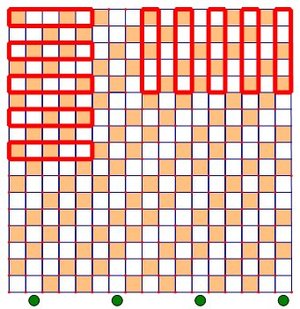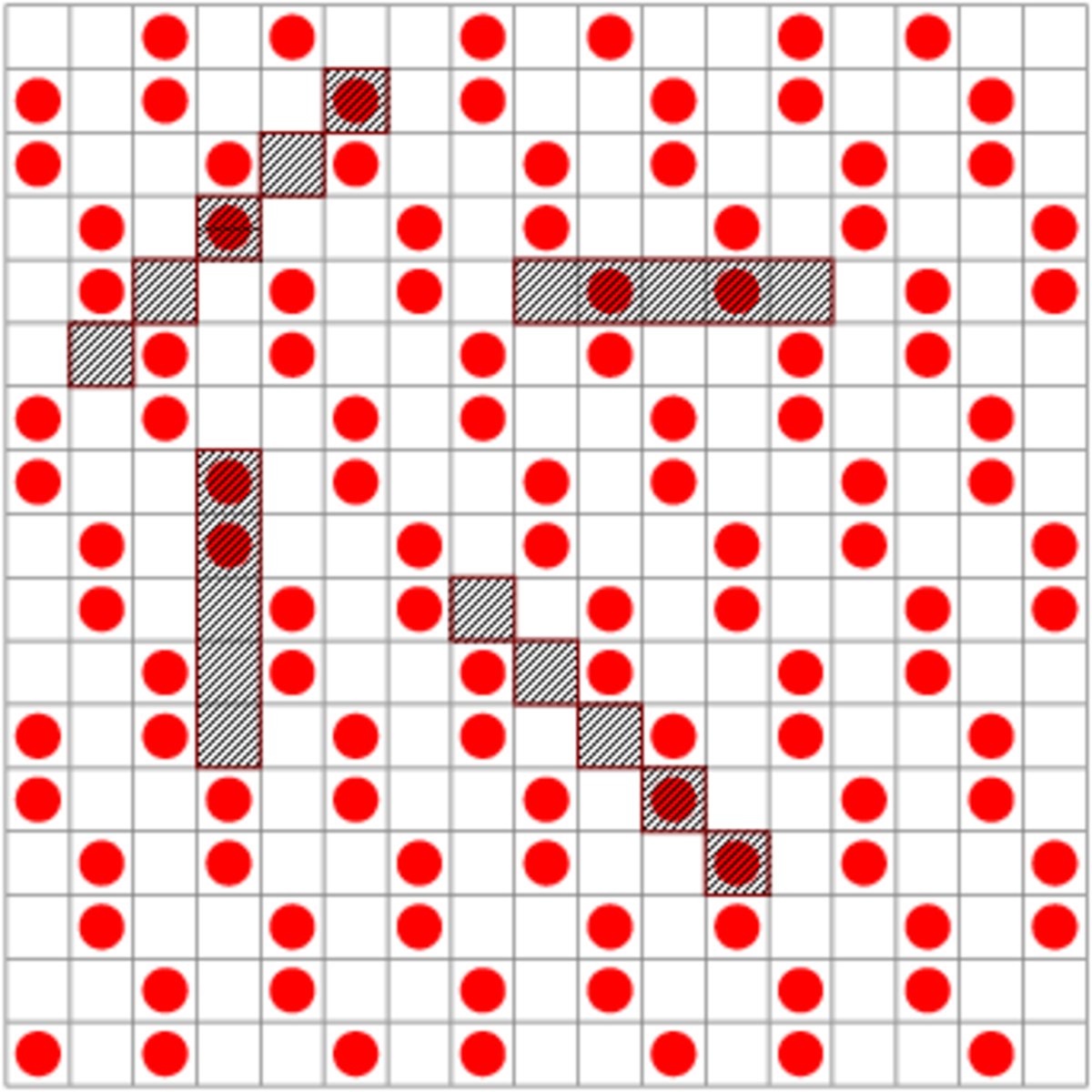Japanese Mathematical Olympiad 2005 (Revised)
We are given a array of coins with heads up. In each step, one can choose five consecutive coins in a row, column or diagonal and reverse them. Is it possible to obtain a position with all coins having tails up in a finite number of such steps?
Note: "Reverse" indicates switching from head to tail or back again, not a random flip as in probability.
This section requires Javascript.
You are seeing this because something didn't load right. We suggest you, (a) try
refreshing the page, (b) enabling javascript if it is disabled on your browser and,
finally, (c)
loading the
non-javascript version of this page
. We're sorry about the hassle.

Consider 115 red coins: In each step (horizontal, vertical, diagonal) exactly 2 of them will be flipped!
Because of the parity it is not possible to have all (red) coins showing tails.
In each step (horizontal, vertical, diagonal) exactly 2 of them will be flipped!
Because of the parity it is not possible to have all (red) coins showing tails.